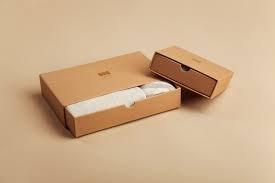Packaging Designer

In the bustling aisles of supermarkets or the sleek corners of boutique stores, one element silently vies for our attention – packaging. It’s the silent salesperson, the visual storyteller, and the tactile emissary of brands to consumers. Behind every enticing box, every ergonomic bottle, and every aesthetically pleasing pouch lies the creative genius of a packaging designer.
The Essence of Packaging Design
Packaging design is not merely about wrapping a product in an attractive covering; it’s a strategic blend of aesthetics, functionality, and brand communication. It’s the first impression a product makes, the tactile experience a consumer feels, and the lasting memory it leaves. A packaging designer is tasked with translating brand identity, values, and product attributes into tangible visual and physical forms.
The Role of a Packaging Designer
A packaging designer’s role extends far beyond the realm of graphic design. They are multidisciplinary artists, combining elements of psychology, marketing, engineering, and sustainability to create impactful packaging solutions. Here’s a glimpse into the diverse responsibilities of a packaging designer:
- Understanding Consumer Behavior: Packaging designers delve into the psyche of consumers, studying their preferences, habits, and purchase triggers. They analyze market trends, conduct consumer surveys, and observe behavioral patterns to create packaging that resonates with the target audience.
- Visual Communication: Visual elements such as color, typography, imagery, and layout play a pivotal role in packaging design. A packaging designer carefully selects these elements to convey the brand’s identity, evoke emotions, and communicate product features effectively.
- Structural Design: Beyond aesthetics, packaging designers are also adept at structural design. They engineer packaging solutions that ensure product protection, ease of use, and shelf appeal. From innovative bottle shapes to ergonomic food containers, every aspect is meticulously crafted to enhance user experience.
- Sustainability Integration: In an era of environmental consciousness, sustainability is a key consideration in packaging design. Packaging designers explore eco-friendly materials, minimalistic designs, and recyclable packaging solutions to reduce environmental impact while maintaining brand integrity.
- Collaboration: Collaboration is at the heart of packaging design. Designers work closely with marketing teams, product developers, manufacturers, and suppliers to align packaging strategies with overall brand objectives. Effective communication and teamwork are essential to bringing a packaging concept from ideation to fruition.
- Adaptability: The landscape of consumer preferences and industry trends is constantly evolving. Packaging designers must stay abreast of the latest innovations, technologies, and design trends to remain relevant in a dynamic marketplace. Adaptability and a willingness to embrace change are essential traits in this field.

Challenges and Opportunities
While the role of a packaging designer is inherently creative and fulfilling, it comes with its fair share of challenges and opportunities:
- Balancing Creativity and Functionality: Striking the perfect balance between creative expression and functional requirements can be a daunting task. Packaging designers must ensure that their designs not only look appealing but also serve their intended purpose effectively.
- Navigating Regulatory Compliance: Packaging designers must navigate a labyrinth of regulatory requirements governing packaging materials, labeling, and safety standards. Staying compliant while maintaining design integrity requires meticulous attention to detail and regulatory knowledge.
- Embracing Technological Advancements: Technology is reshaping the landscape of packaging design, with innovations such as augmented reality, smart packaging, and digital printing opening new avenues for creativity. Packaging designers must embrace these technological advancements to stay ahead of the curve and enhance the consumer experience.
- Addressing Sustainability Imperatives: The growing demand for sustainable packaging presents both a challenge and an opportunity for packaging designers. By embracing sustainable materials, minimalist designs, and circular economy principles, designers can not only reduce environmental impact but also enhance brand reputation and consumer loyalty.
- Cultural Sensitivity and Globalization: In an increasingly interconnected world, packaging designers must be mindful of cultural nuances and preferences. Designs that resonate with one market may not necessarily translate well to another. Cultural sensitivity and global market research are essential for crafting packaging solutions that resonate with diverse audiences.
Conclusion
Packaging design is an art form that blends creativity, functionality, and strategic thinking to create impactful consumer experiences. From the captivating graphics on a cereal box to the innovative structure of a perfume bottle, packaging designers play a pivotal role in shaping the way we perceive and interact with products. As consumer preferences evolve and sustainability imperatives intensify, the role of packaging designers will only become more critical in shaping the future of brand communication and consumer engagement.
